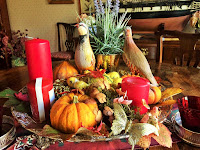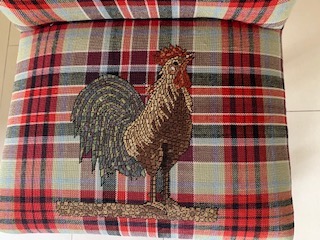THE LONG MARCH TO WOMEN’S FREEDOM
Recently I have been lucky enough to attend a short but very
interesting course of writing articles and blogs. We each had to prepare something for the
other members of the class to critic, very scary but most useful. This happened
the day after I posted my latest on India and the tutor said that my comment
‘’Even the spinning wheel became a weapon in the struggle for women’s freedom’’
was most interesting and should be explored further.
 The tutor also said that I should write more about the
opening up of trade between Europe, England in particular, and India and this I
promise to do at a later date, however her comment about weaving, stitching and
embroidery helping largely in women’s flight for both financial and social
freedom intrigued me and made me want to follow it further.
The tutor also said that I should write more about the
opening up of trade between Europe, England in particular, and India and this I
promise to do at a later date, however her comment about weaving, stitching and
embroidery helping largely in women’s flight for both financial and social
freedom intrigued me and made me want to follow it further.
Fortunately I was able to attend a day seminar on Opus Anglicanum just a few days ago. Until then I (wrongly) had believed that it was worked almost entirely for the Church but there was also many items of secular embroidery. Items of clothing of for well-to-do people as well as the clergy, horse-trappings and furnishings were commissioned – these were more commonly used and thus did not survive as the ecclesiastical pieces did.
 The tutor also said that I should write more about the
opening up of trade between Europe, England in particular, and India and this I
promise to do at a later date, however her comment about weaving, stitching and
embroidery helping largely in women’s flight for both financial and social
freedom intrigued me and made me want to follow it further.
The tutor also said that I should write more about the
opening up of trade between Europe, England in particular, and India and this I
promise to do at a later date, however her comment about weaving, stitching and
embroidery helping largely in women’s flight for both financial and social
freedom intrigued me and made me want to follow it further.Fortunately I was able to attend a day seminar on Opus Anglicanum just a few days ago. Until then I (wrongly) had believed that it was worked almost entirely for the Church but there was also many items of secular embroidery. Items of clothing of for well-to-do people as well as the clergy, horse-trappings and furnishings were commissioned – these were more commonly used and thus did not survive as the ecclesiastical pieces did.
I even found out there were women named; by the late 13
century it had become a highly lucrative industry and a number of workshops
flourished financed with City money and employing both men and women. Famous
among them were Mabel of Bury St. Edmunds and Rose, wife of John de Burford who
was a merchant in the City of London.
From records it would appear that frequently it was a man, the owner of
the workshop, who received the payment but I suspect that there were women
employed in the stitching.
Famous examples such as the Syon Cope and the Steeple Aston
Cope, named after the area they were designed for or the family who
commissioned them, are in the Victoria and Albert Museum. But I believe that at the time of the
Reformation there was a danger of Church vestments being confiscated so many
items were sold abroad hence the excellent examples in foreign museums and
collections.
Fast forward to the 19th century when Berlin Wool
Work became the international rage.
These patterns to be stitched with worsted wools were originally drawn
and painted on graph paper (then called point paper). These charts were imported in their
thousands to Britain and the USA. I
have read that while L. W. Wttich the Berlin print seller has always been
credited with starting this craze, it was his wife, an enthusiast who drew her
own designs and encouraged him.
Originally these patterns were hand-coloured by an army of
women in Germany, the wool too was produced there and generally speaking the
designs were useful and tastefully coloured.
Later on with the advent of aniline dyestuffs in the 1850’s (strong
magentas and spinach green to give examples of the more lurid colours!).
As a result of the insatiable
demand from the emerging leisured classes, the patterns were printed in colour
and any item that fancy could believe would add to the overstuffed Victorian
house. Images of animals, particularly
dogs and birds were popular and I believe ‘sleeves’ for piano legs and covers
to keep the key board dust free were available.
This subject of women gaining status, independent and some
form of financial security is vast and worthy of much more research. I
have skated over the Elizabethan period when leisured women stitched many types
of needlework the most famous of whom was Mary Queen of Scots. She is
recorded to have passed many hours of her imprisonment stitching. However furniture of the period was heavy and
so table carpets and wall-hangings particularly for beds were both popular and
needed. While men frequently designed
and prepared canvases women were engaged in the stitching.
Dame schools in the States taught basic sewing and the
Finishing Schools on the East Coast taught many more sophisticated types of
needlework. No doubt the basic needlework enabled the poorer girls to continue
in the professional field while the more leisured girls bought and commissioned
needlework for their own use. This was
similar in Britain and many establishments offered music, drawing and
needlework ahead of anything more academic.
A vast range of monthly magazines offering the latest ideas
and how-to projects were published in the 19th and early 20th
century, first in the USA and then the UK. The first in America was Godey’s Ladies Book
which was the first to actually pay the contributors for their work. Being strong on the latest embroidery,
handwork and recipes one can only believe these authors were women.
As I have already said, this topic is vast, well worthy of
serious and extensive research. I
haven’t even touched on the India women’s independence though I do hope I shall
find out more while reading about the international trade that was established
many centuries ago.
However women in many parts for the world, through many
forms of embroidery, weaving, spinning patchwork writing about the craft or
even preparing and painting designs among others gained a type of independence
important to them. It could have been
producing or helping to produce something extremely beautiful, it could have
been being in the company of fellow workers, It could even have been, though not necessarily,
making some money of their own.
Similar activities continue to this day, I also have more than one version of a
design stitched to check quantities and instructions, Knitters check patterns
and knit finished garments for photography, help can be given if a client wants
a custom piece but is not prepared to do it themselves.
I should apprieciate your comments, contributions or details
of how you or members of your family gained social or financial independence
from active participation in hand crafts.
Perhaps they were left with young children and little support or they
had to live abroad, joinging their husband in a country were driving or
venturing out unaccompanied was not safe.
I should love to hear your stories.
Related information:
My favourite reference books
The
Needleworker’s Dicationary Pamela
Clabburn
Needlework,
an illustrated history Edited by
Harriet Bridgeman & Elizabeth Drury
Upcoming exhibition
Victoria
& Albert Museum Opus
Anglicanum Oct 2016 – Feb. 2017








I know my beloved Aunt Luda McCurry Moneyhun was left a widow at a young age with kids to support and used her sewing and dress making skills to earn a living when she lived in Michigan in the 1940s. All the women in my family until the 1960-70s did handwork of various kinds but it seems not to have caught on in the younger generation despite my best attempts to teach my nieces. Maybe when they are older....
ReplyDelete